Features
Moving up the Colonial civil services ladder in the Caribbean and Africa

by Sir. Henry Monck-Mason Moore
Last British Governor of then Ceylon
The writer outlines his career prior to his return to Ceylon
Towards the end of 1921 1 went on leave when I met Miss Benson again in London and we became engaged. She was at the time a very brilliant student at the Royal Academy schools to which she had gone after working in the Slade School. Her marriage to me in December of that year put an end to what might have been a great career as a painter. Since my retirement she had done some serious painting again.
We had to cut our honeymoon short, as I was unexpectedly offered the post of Colonial Secretary, Bermuda. It represented promotion only in status, as the salary attached was less than I was drawing in Ceylon, no official house was provided and no passage allowance. After some 18 months I applied for a transfer, regardless of status, to an appointment in some other Colony where we could live on our pay, and in 1924 I was offered the post of Principal Assistant Secretary, Nigeria, which I accepted.
Though ruinously expensive, our time in Bermuda had its compensations. Prohibition had not been rescinded in America, and three ships a week from New York brought shiploads of its thirsty citizens to the hotels and bars of this popular tourist resort. Among them we met many charming people, though it was impossible to return their hospitality in the sort of boarding house in which we were reduced to live. The old Bermudian families lived in a select social circle of their own. Many of them let their charming old colonial type houses for the American season at highly inflated rentals on which they were able to live in great comfort for the rest of the year.
The Chief Justice, the Colonial Secretary and the Chief of Police were the only three imported officials, and it was difficult, if not impossible to get the House of Assembly to improve their conditions of service. The executive had no representation in the lower house – even the Attorney-General, a Bermudian and member of the Executive Council, had to secure a seat in some constituency, before he could sit and introduce Government bills.
The Legislative Council, the upper house, consisted of the Chief Justice as President, the Colonial Secretary and Receiver-General (Treasury and Customs) as official members with two unofficial members who had won their spurs in the lower house. The Governor was always a soldier and commander of the local garrison. He presided over the Executive Council, but took no part in the debates of either house, his proposals being forwarded to the Legislature by way of “message,” and had no powers, other than those of persuasion, of securing his policy being adopted. Any idea of Colonial Office control was bitterly resented and the Assembly has succeeded in maintaining its virtual independence up to the present day.
For me it was a novel and somewhat exasperating experience to have to plunge so abruptly into the whirlpool of local politics in an island where, because of its very smallness, party feelings were easily aroused and personal rivalries were rampant. In retrospect it was no doubt a useful experience for the more controversial political crises in which I was destined to be involved in Kenya and still later in Ceylon.
In Bermuda the franchise was dependent on a property qualification which was jealously guarded by the old Bermudian families. As a result there was in my time only one coloured member of the House of Assembly, and socially the colour bar was complete. Immigration from the West Indies was closely controlled, and the Bermudian Negroes, mostly descendants of emancipated slaves, were generally employed as domestic servants, carriage drivers – no motor cars were allowed in the island – and dock labourers. The growing of fresh vegetables and the Bermuda Lily was in the hands of specially imported Portuguese, who were skilled market gardeners. The colour question, therefore, in my day had not assumed serious proportions.
Nigeria
In 1924, I accepted the post of Principal Assistant Secretary in the Lagos Secretariat, Nigeria, having refused the appointment of Colonial Secretary, Bahamas, where I knew the conditions were much the same as in Bermuda and the cost of living equally expensive. On arrival, as I have already recorded, I found Sir Hugh Clifford was Governor and Sir Donald Cameron Chief Secretary. When Northern and Southern Nigeria were united in a single administration by Lord Lugard, Sir Donald had been responsible for much of the detailed work behind the scene. He was primarily an office man with Southern Nigerian experience and was not persona grata to the Lieutenant-Governors of the North.
Whether for this or for reasons of economy he was not given the status or salary which his duties and responsibilities deserved. Sir Hugh Clifford on his arrival immediately set up a well-staffed and organized Central Secretariat in Lagos, made Sir Donald Chief Secretary, and gave him equivalent status and salary with the Lieutenant-Governors of Northern and Southern Nigeria. As a result Sir Hugh and Sir Donald worked together in great harmony, and were a formidable team.
Sir Donald absorbed much of Sir Hugh’s administrative experience, but at the same time brought his acid intelligence to bear on Sir Hugh’s more exuberant proposals. Before long Sir Donald was promoted to the Governorship of Tanganyika, and was, succeeded by Sir F. M. Baddeley from Malaya.On the announcement that the Prince of Wales was to visit Nigeria and the West Coast Colonies en route to Cape Town, Sir Hugh entered enthusiastically into the preparation of somewhat grandiose plans for his reception. A reception committee was set up of which I became the secretary, while Lady Clifford, who was in London, kept in touch with the Prince’s staff, at St. James’ Palace.
In the midst of all these preparations Sir Hugh had something in the nature of a nervous breakdown and for six weeks retired up country for a rest to await the arrival of Lady Clifford. At the last moment, owing to an outbreak of smallpox in Lagos, the visit was almost abandoned altogether, but eventually this difficulty was overcome by re-arranging the itinerary so that the visit to Lagos was made after the quarantine period had expired.
As a result Sir Hugh alternated between periods of deep depression and high exaltation, and it was on the latter note that eventually he accompanied the Prince throughout his visit. A contributory factor was that he knew by this time that he was to become Governor of Ceylon, a stepping-stone to the Governorship of Malaya, which had been his life long ambition.During the last few weeks, between the departure of the Prince of Wales and Sir Hugh’s own departure on leave prior to taking up the Ceylon appointment, his behaviour became suggestive of some form of mental instability, and it was reported by some of his friends to the medical authorities that they were apprehensive that he was suffering from delusions.
What steps, if any, were taken to report this to the Colonial Office officially I do not know. In view of the tragic end to his brilliant career when Governor of Malaya, one is left wondering whether this could have been in any way avoided.In 1927 I was promoted to Deputy Chief Secretary in succession to Sir Shenton Thomas, who was appointed Colonial Secretary in the Gold Coast from which he went later to Singapore as Governor and became a Japanese prisoner of war on the fall of Singapore. By that time Sir Graeme Thomson had succeeded Sir Hugh Clifford as Governor of Nigeria, and my wife and I were naturally delighted at again serving under him and Lady Thomson, whom we had known so well in Ceylon.
They had had, I believe, a difficult time in British Guiana, where Sir Graeme had introduced some constitutional reforms in the teeth of much local unofficial opposition. As a result he seemed to have lost some of his early vigour, though he early initiated a new housing scheme for Government servants, which was long overdue. He appointed two committees for Northern and Southern Nigeria and I was fortunate in being appointed Secretary to both. He also took the revolutionary step in those days of appointing a woman member to each. This was a wise move as by that time more and more wives were coming out to join their husbands during their tours of service, which had been prohibited or greatly restricted in the past.
As a result my wife and I had the opportunity of making, extensive tours in the two provinces and seeing something of out-station life, which was a welcome change from the somewhat suburban atmosphere of Lagos. Later Sir Graeme fell seriously ill with an internal haemorrhage, and when I left in 1929 to take up the appointment of Colonial Secretary, Kenya, he was lying in bed in Government House on the danger list. He subsequently recovered but I don’t think he was ever quite the same man again.
Kenya
In 1929 we arrived in Nairobi to find the Governor Sir Edward Grigg in London and my predecessor Sir Edward Denham on leave preparatory to taking up the appointment of Governor of Jamaica. So the Chief Justice, Sir Jacob Bath, was acting as Governor and continued to do so till the return of Sir Edward Grigg. Kenya was in the throes of much political agitation owing to the demand of the Indians to be put on a common roll with the European elected members instead of an Indian communal roll. At the same time the European elected members were pressing for closer union between the territories of Kenya, Uganda, and Tanganyika.
Mr. Amery, the Secretary of State for the Colonies in the Conservative Government, was a strong advocate of such a policy, and had privately instructed Sir Edward Grigg to prepare the ground for it. With the support of Lord Delamere, the leader of the Settlers, an imposing new Government House, designed by Sir Herbert Baker, had been built on lines suitable for the accommodation of a Governor-General of the three territories.
Neither Uganda nor Tanganyika were enthusiastic over this proposal, as they were apprehensive of domination by White Settler opinion. The controversy was referred to London where an Inter-Parliamentary Committee advised against any immediate action without, closing the door to its further consideration in the future. By this time the world economic depression was threatening and Lord Delamere himself realized that the scheme must be put into cold storage till economic conditions were more favourable. With the advent of Lord Passfield as Secretary for the Colonies under the Labour Government, a White Paper was issued which gave the agitation its quietus.
The Indians at first boycotted both the Municipal and Legislative Council elections but eventually accepted a communal role, which enabled them to take their part in municipal and legislative activities. It was in this super-charged atmosphere that I found myself, as, Colonial Secretary, Leader of the Official majority in the Legislative Council, in which I made my first appearance with some trepidation, as neither in Bermuda nor Nigeria did I have any experience of the rough and tumble of parliamentary debate.
Eventually I found my feet and was able to establish friendly relations with all sides of the House despite verbal encounters in the debating chamber. But by this time constitutional controversies were temporarily forgotten in the attempt to grapple with the serious financial position of the Colony owing to the world depression.It was at this time that I first met General Smuts when I sat next to him at a dinner given in his honour on his way to attend the World Economic Conference. Speaking from a few notes scribbled on the back of his menu card, he adroitly side-stepped any local controversial issues and won general applause for his statesmanlike and noncommittal appreciation of the situation. I little thought that I was later to be brought into so much closer association with him during World War II.
Owing to the collapse of world prices the European farmers were in serious straits with the banks calling in mortgages and declining to make advances to meet current expenditure. Some relief was afforded by the Government’s establishment of a Land Bank, and by the discovery of alluvial gold in the Kakamega area; many farmers left their wives to run the farms and went to pan gold themselves. But no substantial gold mining materialized, and this proved only a temporary expedient.
By this time Sir Edward Grigg’s term of office was expiring, and I acted as Governor till the arrival of his successor, Sir Joseph Byrne. His relations with Lord Delamere were strained from the first, and the situation was not made easier by the fact that, although a levy on salaries had been imposed on all Government officers and Government expenditure reduced to a minimum, the financial position of the Colony was still very bad.
Accordingly Lord Moyne was sent out by the Secretary of State to report on the situation. His original term of reference was to review the revenue position and its allocation between European, Indian and native services. The natives paid hut and poll tax but non-natives paid no direct taxation other than certain charges for schools and hospitals. Lord Moyne was later instructed to make recommendations for balancing the Budget and recommended the introduction of income tax for all non-natives.
This gave rise to one of the most heated controversies in Kenya’s history. After the Bill had passed its Second Reading by use of the Official majority, Lord Francis Scott and Col Grogan flew to London to see the Secretary of State, Sir Philip Cunliffe Lister, to gain support to alternative proposals proposed by the European elected members.
They were able to induce the Secretary of State to give their proposals a trial, and the Income Tax Bill was dropped. In the event, as the local government had foreseen, some of their proposals proved unworkable and the remainder failed miserably to produce the revenue required. Eventually, after long delay, agreement was reached to the introduction of Income Tax as an emergency measure. It is still on the statute book !
On Lord Delamere’s death, Lord Francis Scott had become leader of the European elected members. As explained above he had in London secured the last minute approval of the Secretary of State to the shelving of the Income Tax Bill. This was hailed with delight as a defeat of the local government. At this awkward moment Sir Joseph Byrne had to go on leave for health reasons and I was left to carry the baby.It was a highly controversial period and later, after Sir Joseph’s return, Cunliffe-Lister flew out himself to visit Kakamega and meet a deputation of the elected members. Unfortunately he was taken seriously ill and lay for days in Government House before he was out of danger. His visit, therefore, did little to remove the tension, particularly as he was unwilling to provide the financial aid on the lines recommended by the elected members.
By 1934 when I left to become Governor of Sierra Leone, Kenya was slowly emerging from the depression. I was first offered the Governorship of British Guiana. But this I refused on the advice once given to me by Sir Graeme Thomson. He had accepted it himself with enthusiasm as he had had high hopes of developing its largely unexplored interior. But he left it disillusioned, and as my experience in Bermuda, though not in the West Indies, had given me some insight into West Indian conditions, I remembered his advice and declined. Soon after Sierra Leone fell vacant, of which Sir Joseph Byrne had previously been Governor. He advised me to accept, which I did.
It was a difficult choice, as it involved leaving our two young daughters in England. For my wife it meant breaking up our home again, and repeating the experience in Nigeria of spending part of the time with me and part with the children. It is the hard price that the Colonial Servant has to pay, but it is the wife who has to pay the hardest price.
In the event unexpected relief came in 1937 by my appointment as an Under Secretary of State in the Colonial Office. Mr. Ormsby-Gore, later Lord Harlech, initiated the idea of bringing in temporarily a junior Governor into the higher echelons of the Home Civil Service instead of bringing in junior officers – known as “Beachcombers” – to work in the lower ranks. It represented a very considerable financial loss and in our case was only rendered possible by the generosity of my wife’s parents.
During my comparatively brief period in Sierra Leone I was able to lay the foundations of a closer administration of the Protectorate, which was somewhat haphazardly administered through a host of minor chiefs. I sent Mr. Fenton – a most efficient officer – to study the local native administration being set up, particularly among the Ondos in southern Nigeria. He prepared a most useful report and its recommendations were being implemented when I left.
In the past most emphasis had been laid on Freetown itself, where the educated “creoles” – descendants of the original ex slave settlements – held a monopoly of clerical appointments and trading interests in the West Coast. With the spread of education in the Gold Coast and Nigeria local men were taking their place, while the Syrian traders were successfully ousting them. White collared unemployment was becoming a problem in Freetown, and the interests of the Protectorate natives were of secondary importance to the unofficial members of the Legislative Council.
The development of iron ore at Marampa and the discovery of diamonds and some alluvial gold had revolutionary results, as it became clear that on the development of the mineral resources of the Protectorate depended the prosperity of Sierra Leone, rather, than on the precarious export of palm kernels and palm oil. I also with the aid of the Colonial Development Fund had a circular road driven round the Peninsula which proved to be of great value during the war.
Representatives of the Army, Navy and Air Force, arrived to study sites for aerodromes, flying boat bases, and battery extensions and boom-harbour defences, but little progress had been made by the time I left. I appointed Mr. Beoku Betts, the first Creole to become a member of the local legal department. He became, I believe, a good Government servant despite his having previously graced the Opposition benches in the Legislative Council.
Features
Evolution of Paediatric Medicine in Sri Lanka: Honouring Professor Herbert Aponso on his 100th Birthday.
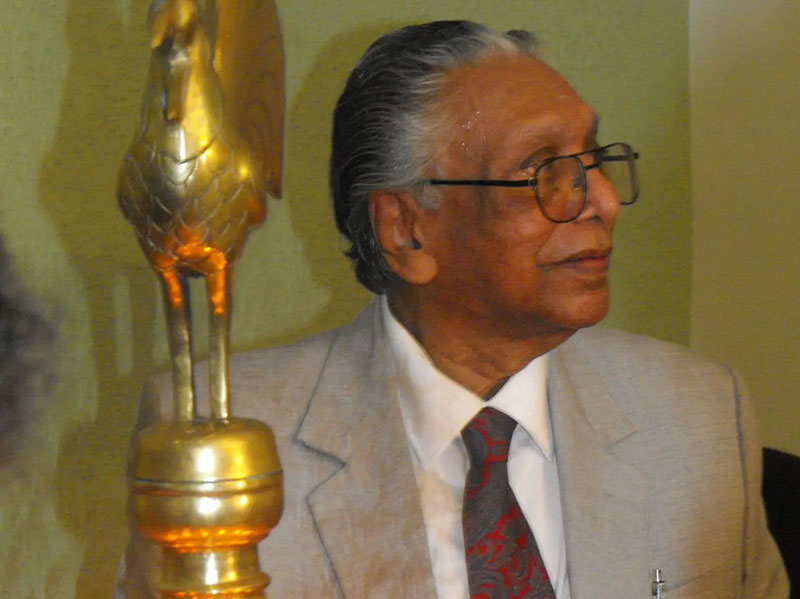
Professor Herbert Allan Aponso, born on March 25, 1925, recently celebrated his 100th birthday at his serene home in Kandy. Surrounded by his cherished children, the occasion not only honoured his extraordinary life but also served as a tribute from his academic colleagues, recognising his outstanding contributions to the field of paediatrics in Sri Lanka. Professor Aponso is widely recognised for his exceptional ability to combine extensive field experience with academic teaching and groundbreaking research. He emphasised social causes of disease and maintained that a disease is not just a manifestation of biological factors in the human body, but an expression of social and environmental factors as well. He encouraged his students to consider social aspects, such as family factors and poverty, in order to explain diseases, particularly childhood diseases such as malnutrition.
Born in Lakshapathiya, Moratuwa, Aponso began his academic journey at Prince of Wales College, Moratuwa, excelling in the Senior School Certificate and London Matriculation Examinations. His medical aspirations led him to the University of Colombo in 1943 and subsequently to the Medical College, where he graduated MBBS with honours in 1949. Pursuing further specialisation, he trained in paediatrics at the prestigious Great Ormond Street Hospital for Children, the largest and oldest children’s hospital in the UK, earning his DCH (London) in 1956 and MRCP (Edinburgh) in 1957.
Upon his return to Ceylon in 1958, Aponso earned his MD in Medicine and commenced a distinguished academic career. He joined the Faculty of Medicine in Colombo as a Senior Lecturer in 1963 and subsequently took on the role of Lecturer-in-Charge of Paediatrics at the University of Ceylon in Peradeniya in 1964. His career saw steady progression as he was promoted to Associate Professor in 1974 and ultimately attained the position of full Professor of Paediatrics in 1977.
Aponso was a Fellow of both the Royal College of Physicians (Edinburgh) and the Ceylon College of Physicians. He actively contributed to the Kandy Society of Medicine, where he served as President from 1974 to 1975. Beyond medicine, he played key roles in community organisations. Before relocating to Kandy, he was the president of the Moratuwa YMCA and a founding member of the Moratuwa Y’s Men Club. Later, he led the Kandy Y’s Men’s Club, which evolved into the Mahanuwara Y’s Men’s Club.
His contributions extended into promoting nutritional advancements, notably advocating for the consumption of soya. He pioneered the preparation of soya products in the kitchen of the Peradeniya Teaching Hospital and established a Soya Centre linked to the Kandy YMCA. Further showcasing his dedication to public health, he presided over the Sri Lanka Association for Voluntary Surgical Contraception and Family Health during two separate periods: 1977–1979 and 1986–1987. Additionally, he led the Sri Lanka Paediatric Association from 1976–1977.
Even after retiring from the University of Peradeniya in 1993, his impact endured. In recognition of his lifelong contributions, the university awarded him an honorary DSc in 2022. Through his tireless dedication, Professor Aponso profoundly influenced paediatric medicine in Sri Lanka, leaving an enduring legacy in both academic and medical spheres. Paediatrics as a specialised field of medicine in Sri Lanka has evolved over centuries, shaped by indigenous healing traditions, colonial medical advancements, and modern institutional developments. During colonial times under the Portuguese and Dutch, children continued to be treated through traditional medicine. The British colonial administration formalised Western medical education and established hospitals. In 1870, the Ceylon Medical College (now the Faculty of Medicine, University of Colombo) was founded, producing doctors trained in Western medicine. Paediatric care as a distinct discipline began to emerge in the early 20th century, having previously been part of general medicine. The introduction of vaccination programmes, particularly against smallpox, was a major public health advance introduced under the Vaccination Ordinance of 1886. It was during the1920s that Maternal and Child Health Clinics were setup in villages, laying the foundations for addressing child health issues in the country.
The early decades of the century saw the establishment of paediatric units in major hospitals, a critical step towards recognising and addressing the distinct medical needs of children. The establishment of paediatric units in major hospitals in Sri Lanka began in the mid-20th century, with significant developments occurring in the 1950s and 1960s. These units were set up to provide specialised care for children, addressing their unique medical needs. For example, the Lady Ridgeway Hospital for Children in Colombo became a national tertiary care centre, offering advanced paediatric services Hospitals such as the Colombo General Hospital (now the National Hospital of Sri Lanka) and played a pioneering role in creating specialised wards dedicated to paediatric care, laying the foundations for future advancements in the field.
A major turning point in the progress of paediatrics in Sri Lanka came with the appointment of Dr. C. C. de Silva as the first Professor of Paediatrics at the University of Ceylon (now the University of Colombo) in the 1950s. He was instrumental in formalising paediatric education and training, ensuring that future medical professionals were equipped with the knowledge and skills to provide specialised care for children. The introduction of dedicated paediatric courses in medical schools marked a shift from traditional general practice to a more specialised approach to child healthcare. The 1950s also saw the expansion of paediatric services beyond Colombo, with provincial hospitals establishing their own paediatric units, making specialised care accessible to a wider population.
The latter half of the 20th century witnessed remarkable progress in paediatric care, with the establishment of postgraduate training programmes aimed at producing highly qualified paediatricians. These programmes were designed to meet the increasing demand for specialised medical professionals who could address the complex healthcare needs of children. Alongside these educational advancements, there was a significant improvement in neonatal and maternal healthcare services, leading to better survival rates for newborns and reducing infant mortality. Innovations in paediatric research and healthcare policies further contributed to improvements in the overall well-being of children in Sri Lanka.
By the 1980s, paediatrics had firmly established itself as a distinct and essential medical discipline in Sri Lanka. The introduction of specialised paediatric subfields such as neonatology, cardiology, and nephrology allowed for more targeted treatment and improved health outcomes for children with complex medical conditions. The role of paediatricians expanded beyond hospital care, with increased involvement in public health initiatives such as immunisation programmes and nutritional interventions. The collaborative efforts of the government, medical institutions, and healthcare professionals ensured that paediatric care in Sri Lanka continued to progress in parallel with global medical advancements.
The development of paediatric specialization in Sri Lanka during the 20th century was a transformative journey that laid the groundwork for the country’s modern child healthcare system. From its humble beginnings in general hospital wards to the establishment of specialised training programmes and research initiatives, paediatrics evolved into a well-defined and essential medical discipline. This progress not only improved healthcare outcomes for children but also contributed to the overall strengthening of the medical field in Sri Lanka. Today, paediatrics continues to be a vital component of the healthcare system, building upon the foundations set during the 20th century to ensure a healthier future for the nation’s children. Professor Aponso was integral to the shaping of this process of development, in the 1950s and afterwards, fully engaged in every aspect. His involvement was not just academic, as he was an advisor to the government and other organisations, such as the World Health Organization, on matters about advancements in child health.
One of his most significant accomplishments was a six-year research project, generously funded by the World Health Organization (WHO) and the Canadian International Development Agency (CIDA). This initiative was integral to addressing pressing health challenges within the Mahaweli Accelerated Development Programme in its initial phase. The project focused particularly on improving healthcare services in System ‘C’ of Girandurukotte, a region populated by settlers relocated from villages inundated due to the construction of large tanks and reservoirs. The programme was launched shortly after the settlers arrived, aiming to tackle the myriad health issues they encountered as newcomers to the dry zone settlements.
Under Aponso’s leadership, ‘mothers’ clubs’ were established in hamlets in each of the four settlement units chosen for intervention. These clubs became vital community spaces where families could engage in discussions about the health problems they faced. The challenges were numerous and varied, including skin diseases, issues with drinking water, snake bites, elephant attacks, and accidents sustained while working in newly cleared paddy lands. Malaria and flu posed an especially serious threat at the time, necessitating timely treatment.
The mothers’ clubs operated as dynamic forums where settlers could participate in question-and-answer sessions about their health concerns. These sessions often culminated in providing treatments for those afflicted. The efforts were supported by Dr. (Mrs.) Fernando, a dedicated health officer in ‘System C’ of Girandurukotte, who attended most of the meetings, ensuring professional medical assistance. Professor Aponso was also assisted by lecturers at the Department of Paediatrics and a health education officer, Mrs. Alagoda, whose skills in engaging with mothers played a pivotal role in the success of the discussions and outreach programmes.
During this period, the Centre for Intersectoral Community Health Studies (CICHS) emerged under the visionary leadership of Professor Aponso. As an interdisciplinary scholarly organisation dedicated to advancing health research in Sri Lanka, CICHS made remarkable strides in the field. Among its pioneering initiatives, the sexual-risk prevention programme stood out as a milestone. This programme prioritised fostering individual competencies while shaping cultural norms that encourage healthy sexual decision-making, reflecting the organisation’s commitment to impactful research and community well-being.
As the project manager of the WHO/CIDA project, I had the privilege of working closely with Professor Aponso. I travelled frequently from my office at the Department of Paediatrics at Peradeniya to the villages, coordinating the programme’s activities. We collected household data on a sample within selected settlement units, such as Teldeniyaya, Hombariyawa, Millaththewa and Rambewa. To make a comparison, we also collected data from Mawanella rural villages, which was considered the control area. This information was then meticulously analysed using an IBM computer, a remarkable technological feat at a time when computers were a rarity.
Our research team, comprising approximately ten recent sociology graduates, including KMHB Kulasekera, RM Karunasekara and Nandani de Silva, worked tirelessly to collect, compile and interpret the data. The findings were shared at various conferences in the form of scholarly articles, providing valuable contributions to both national and global conversations on the public health challenges faced by communities in transition.
Professor Aponso’s work not only made a profound impact on the lives of those settlers but also left an indelible mark on the field of social paediatrics, demonstrating the transformative power of community-based health initiatives supported by collaborative research.
Aponso’s contributions to child healthcare, particularly in the areas of neonatology, nutrition, and medical education are important. As a student of Dr. C. C. de Silva, he was deeply influenced by his mentor’s pioneering work in paediatrics and carried forward his legacy by further strengthening child healthcare services in Sri Lanka. Dr. L.O. Abeyratne was the first Professor of Paediatrics at Peradeniya, and, upon his retirement, Professor Aponso succeeded him, continuing to advance paediatric education and healthcare in Sri Lanka. Aponso was particularly known for his work in neonatal care and the prevention of childhood malnutrition. He played a key role in introducing and promoting best practice in newborn care, helping to reduce infant mortality rates in Sri Lanka. His advocacy for improved maternal and child health policies contributed to the expansion of paediatric services beyond Colombo, ensuring that specialized care was accessible to children in rural areas as well.
Beyond clinical practice, Professor Aponso was a dedicated medical educator. He trained and mentored numerous paediatricians, helping to shape the next generation of child healthcare professionals in Sri Lanka. His work in medical research and teaching influenced advancements in paediatric care and was
instrumental in establishing higher standards in paediatric training programmes. In 2011, in commemoration of his work, Dr. Ananda Jayasinghe edited a collection of essays titled ‘In honour of Herbert Allan Aponso, emeritus professor of paediatrics, University of Peradeniya, Sri Lanka.’
Professor Aponso is a remarkable individual whose humility is as profound as his ability to listen with intention and honour to the perspectives of those around him. A celebrated expert in his field, he was elected President of the Sri Lanka Paediatric Association in 1976 and ascended to the role of full Professor of Paediatrics in 1977. His dedication extended far beyond academia—he served as President of the Young Men’s Christian Association in Kandy during three pivotal periods: 1966–1968, 1973–1975, and 1984–1988.
In 1952, he embarked on a lifelong partnership with Jayanthi Vimala Dias, now deceased, building not just a family but a legacy of intellect and social impact. Together, they raised three children—Ajith, Heshan, and Charmalie—who each distinguished themselves in society. Their home became a vibrant epicentre of stimulating dialogue and collaborative ideas, welcoming friends to partake in lively, thought-provoking discussions.
For me, the memory of Professor Aponso is forever intertwined with the dynamic days of the Mahaweli research project and CICHS initiatives, where his presence enriched every endeavour. As he continues his retirement journey, I wish him abundant health and days brimming with vitality, joy, and a renewed sense of purpose.
by M. W. Amarasiri de Silva
(Emeritus Professor of Sociology, University of Peradeniya Sri Lanka and Lecturer at the University of California, Santa Cruz, USA).
Features
Indian colonialism in Sri Lanka

Following independence from Britain, both India and Sri Lanka emerged as leaders of the Non-Aligned Movement, which sought to advance developing nations’ interests during the Cold War. Indeed, the term “non-alignment” was itself coined by Indian Prime Minister Jawaharlal Nehru during his 1954 speech in Colombo. The five principles of the Non-Aligned Movement are: “mutual respect for each other’s territorial integrity and sovereignty; mutual non-aggression; mutual non-interference in domestic affairs; equality and mutual benefit; and peaceful co-existence.”
Later, Indian Prime Minister Indira Gandhi played a key role in supporting Sri Lankan Prime Minister Sirimavo Bandaranaike’s 1971 proposal to declare the Indian Ocean a Zone of Peace at the United Nations.
Such progressive ideals are in stark contrast to the current neocolonial negotiations between the two countries.
Indian Prime Minister Narendra Modi’s forthcoming visit to Sri Lanka on April 4, 2025, is presented as representing a mutually beneficial partnership that will bring economic development to debt-burdened Sri Lanka. However, the details of the strategic agreements to be signed during Modi’s visit remain undisclosed to the public. This opacity cannot be a good sign and should not be accepted uncritically by the media or the people of either nation.
The Indo-Lanka Agreement of July 29, 1987, was also crafted without consultation with the Sri Lankan people or its parliament. It was signed during a 48-hour curfew when former Indian Prime Minister Rajiv Gandhi arrived in Sri Lanka. This agreement led to the imposition of the 13th Amendment to the Sri Lankan Constitution and established the Provincial Council system. The political framework it created continues to challenge Sri Lanka’s territorial integrity and sovereignty. Rather than bringing peace, India’s 1987 intervention resulted in one of the most violent and chaotic periods in the island’s recent history.
Will these agreements being finalised with Prime Minister Modi also lead to a period of pillage and plunder of the island’s resources and worsening conditions for its people, rather than delivering the promised economic benefits? It is crucial that any bilateral agreements include enforceable measures to stop Indian bottom trawlers from illegally fishing in Sri Lankan territorial waters. This decades-long practice has caused severe damage to Sri Lanka’s marine resources and inflicted significant economic losses on its fishing communities.
Facing an increasing Chinese presence in Sri Lanka and the Indian Ocean, India has sought to strengthen its political, economic, strategic and cultural influence over Sri Lanka through various overt and covert means. During Sri Lanka’s 2022 economic crisis, for example, India provided $4 billion in financial assistance through currency swaps, credit lines, and loan deferrals that enabled Sri Lanka to import essential goods from India. While this aid has helped Sri Lanka, it has also served India’s interests by countering China’s influence and protecting Indian business in Sri Lanka.
Prime Minister Modi’s upcoming visit represents the culmination of years of Indian initiatives in Sri Lanka spanning maritime security, aviation, energy, power generation, trade, finance, and cultural exchanges. For example, India’s Unified Payment Interface (UPI) for digital payments was introduced in Sri Lanka in February 2024, and in October 2023 India provided funds to develop a digital national identity card for Sri Lanka raising concerns about India’s access to Sri Lanka’s national biometric identification data. Indian investors have been given preferential access in the privatisation of Sri Lanka’s state-owned enterprises (SOEs) in key sectors like telecommunications, financial services, and energy. Adani Group’s West Terminal project in Colombo Port is explicitly designed to counter China’s control over Sri Lanka’s port infrastructure, including the Colombo International Container Terminal, Hambantota Port, and Port City Colombo.
India and Sri Lanka have recently agreed to resume negotiations on the Economic and Technology Cooperation Agreement (ETCA), which focuses primarily on the service sector and aims to create a unified labour market. However, Sri Lankan professional associations have raised concerns that ETCA could give unemployed and lower-paid Indian workers a competitive advantage over their Sri Lankan counterparts. These concerns must be properly addressed before any agreement is finalised.
On December 16, 2024, India and Sri Lanka signed several Memoranda of Understanding (MOUs) in New Delhi to enhance cooperation in defense, energy, and infrastructure development. These include plans for electricity grid interconnection and a multi-product petroleum pipeline between the two countries. Building on these agreements, construction of the Sampur power plant in Trincomalee is expected to begin during Prime Minister Modi’s April visit.
The Sampur power plant project, combined with India’s takeover of the Trincomalee Oil Tank Farm, represents a significant step toward integrating Sri Lanka into India’s national energy grid. This development effectively brings Trincomalee’s strategic natural harbour – often called the “crown jewel” of Sri Lanka’s assets – under Indian control, transforming it into a regional energy hub. In 1987, during India’s military intervention in Sri Lanka, New Delhi pressured Colombo into signing a secret agreement stipulating that the British-era Trincomalee oil tank farm would be jointly developed with India and could not be used by any other country.
While India promotes its energy interconnection projects as enhancing regional energy security, recent experiences in Nepal demonstrate how electricity grid integration with India has made Nepal dependent on and subordinate to India for its basic energy needs. Similarly, Bangladesh’s electricity agreement with the Adani Group has created an imbalanced situation favouring Adani over Bangladeshi power consumers. What collective actions could Sri Lanka and other small nations take to avoid such unequal “energy colonialism” and protect their national security and sovereignty?
India’s emergence as a superpower and its expansionist policies are gradually transforming neighbouring South Asian and Indian Ocean states into economically and politically subordinate entities. Both Sri Lanka and the Maldives have adopted “India First” foreign policies in recent years, with the Maldives abandoning its “India Out” campaign in October 2024 in exchange for Indian economic assistance.
India’s “Neighbourhood First Policy” has led to deep involvement in the internal affairs of neighbouring countries including Sri Lanka. This involvement often takes the form of manipulating political parties, exploiting ethnic and religious divisions, and engineering political instability and regime changes – tactics reminiscent of colonial practices. It is well documented that India provided training to the LTTE and other terrorist groups opposing the Sri Lankan government during the civil war.
Contemporary Indian expansionism must be viewed within the broader context of the New Cold War and intensifying geopolitical competition between the United States and China. Given its strategic location along the vital east-west shipping routes in the Indian Ocean, Sri Lanka has become a pawn in this great power rivalry. In addition to granting China extensive control over key infrastructure, Sri Lanka has signed the Acquisition and Cross-Servicing Agreement (ACSA) and Status of Forces Agreement (SOFA) with the United States, effectively allowing the use of Sri Lanka as a U.S. military logistics hub. It was reported that during a visit to Sri Lanka in February 2023, Victoria Nuland, former Under Secretary of State for Political Affairs of the United States strongly suggested the establishment of a joint US-Indian military base in Trincomalee to counter Chinese activities in the region.
As a member of the Quadrilateral Security Dialogue (QUAD) – a strategic alliance against Chinese expansion that includes the United States, Australia and Japan – India participates in extensive QUAD military exercises like the Malabar exercises in the Indian Ocean. However, India’s role in QUAD appears inconsistent with its position as a founding member of BRICS (Brazil, Russia, India, China, South Africa), which was established to promote the interests of emerging economies and a multipolar world order. Unfortunately, BRICS appears to be replicating the same patterns of domination and subordination in its relations with smaller nations like Sri Lanka that characterise traditional imperial powers.
India presents itself as the guardian of Buddhism, particularly in its relations with Sri Lanka, to foster a sense of shared cultural heritage. However, it was Sri Lanka – not India – that preserved the Buddha’s teachings as they declined and eventually disappeared from India. Sri Lanka maintained the Buddhist tradition despite seventeen major invasions from India aimed at destroying the island’s Buddhist civilization.
Even today, despite its extensive influence, India has not taken meaningful steps to protect Buddhist temples and archaeological sites in Sri Lanka’s north and east from attacks by Tamil separatist groups. Instead, India appears focused on advancing the concept of Akhand Bharat (Undivided India) and Hindu Rashtra (Hindu Nation), which seeks to incorporate neighboring countries like Sri Lanka into a “Greater India.” The promotion of the bogus Ramayana Trail in Sri Lanka and the accompanying Hinduization pose a serious threat to preserving Sri Lanka’s distinct Buddhist identity and heritage.
Indian neocolonialism in Sri Lanka reflects a global phenomenon where powerful nations and their local collaborators – including political, economic, academic, media and NGO elites – prioritize short-term profits and self-interest over national and collective welfare, leading to environmental destruction and cultural erosion. Breaking free from this exploitative world order requires fundamentally reimagining global economic and social systems to uphold harmony and equality.
In this global transformation, India has a significant role to play. As a nation that endured centuries of Western imperial domination, India’s historical mission should be to continue to lead the struggle for decolonization and non-alignment, rather than serving as a junior partner in superpower rivalries. Under Mahatma Gandhi’s leadership, India championed the worldwide movement for decolonization and independence in the modern era.
Upholding the principles of the Non-Aligned Movement could forge a partnership benefiting both nations while preserving Sri Lanka’s independence and Buddhist identity. Otherwise, the New Cold War will continue to trample local sovereignty, where foreign powers vie to exploit the island’s resources, subjugate local communities and accelerate environmental and cultural destruction.
by Dr. Asoka Bandarage
Features
Batalanda Skeletons, Victims’ Sorrows and NPP’s Tasks
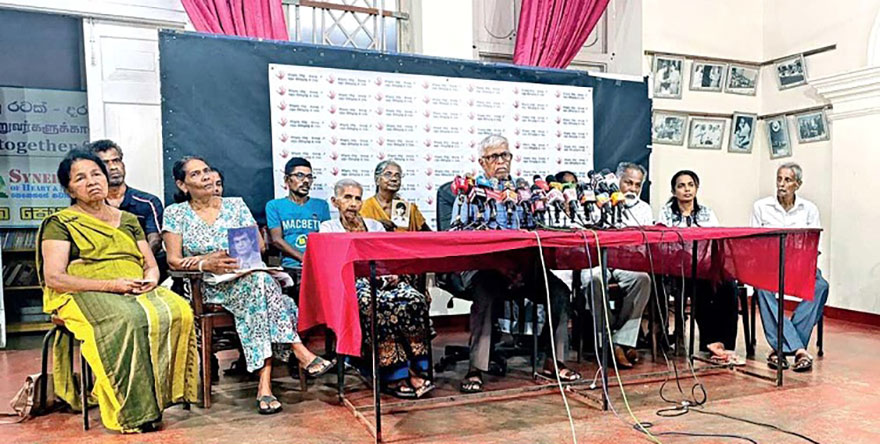
Few foresaw skeletons of Batalanda come crashing down in a London television interview. There have been plenty of speculations about the intended purposes and commentaries on the unintended outcomes of Ranil Wickremesinghe’s Al Jazeera interview. The more prurient takes on the interview have been about the public dressing down of the former president by the pugnacious interviewer Mehdi Hasan. Only one person seems convinced that Mr. Wickremesinghe had the better of the exchanges. That person is Ranil Wickremesinghe himself. That is also because he listens only to himself, and he keeps himself surrounded by sidekicks who only listen and serve. But there is more to the outcome of the interview than the ignominy that befell Ranil Wickremesinghe.
Political commentaries have alluded to hidden hands and agendas apparently looking to reset the allegations of war crimes and human rights violations so as to engage the new NPP government in ways that would differentiate it from its predecessors and facilitate a more positive and conclusive government response than there has been so far. Between the ‘end of the war’ in 2009, and the election of President Anura Kumara Dissanayake and the NPP government in 2024, there have been four presidents – Mahinda Rajapaksa, Maithripala Sirisena, Gotabaya Rajapaksa and Ranil Wickremesinghe – and as many governments. Of the four, Ranil Wickremesinghe is the least associated with the final stages of the war and its ending. In fact, he was most associated with a failed, even flawed peace process that ultimately ensured the resumption of the war with vengeance on both sides. RW was also the most receptive to war crimes investigations even proffering that external oversight would not be a violation of Sri Lanka’s Constitution.
One school of thought about the Al Jazeera interview is that those who arranged it were hoping for Ranil Wickremesinghe to reboot the now stalling war crimes project and bring pressure on the NPP government to show renewed commitment to it. From the looks of it, the arrangers gave no thought to Ranil Wickremesinghe’s twin vulnerabilities – on the old Batalanda skeletons and the more recent Easter Sunday bombings. If Easter Sunday was a case of criminal negligence, Batalanda is the site of criminal culpability. In the end, rather than rebooting the Geneva project, the interview resurrected the Batalanda crimes and its memories.
The aftermath commentaries have ranged between warning the NPP government that revisiting Batalanda might implicate the government for the JVP’s acts of violence at that time, on the one hand, and the futility of trying to hold anyone from the then government accountable for the torture atrocities that went on in Batalanda, including Ranil Wickremesinghe. What is missing and overlooked in all this is the cry of the victims of Batalanda and their surviving families who have been carrying the burden of their memories for 37 years, and carrying as well, for the last 25 years, the unfulfilled promises of the Commission that inquired into and reported on Batalanda.
The families impacted by Batalanda gave a moving illustration of the agony they have been going through for all these years in a recent media briefing, in Colombo, organized by the indefatigable human rights activist Brito Fernando. I am going by the extensive feature coverage of the media event and the background to Batalanda written by Kamanthi Wickremesinghe in the Daily Mirror (March 20, 2025). I am also borrowing her graphics for illustration – a photograph of the media briefing and a map of Sri Lanka showing the scattered sites of mass graves – 20 in all.
“We express gratitude to this government for providing the environment to discuss and debate about the contents of this report,” said Brito Fernando, speaking for the families. After addressing Ranil Wickremesinghe’s obfuscations about his involvement, and decrying Chandrika Kumaratunga’s failure to act on the recommendations of the report of the Batalanda Commission of Inquiry she created, Mr. Fernando appealed to the present NPP government to “provide a secure environment where these victims could come out and speak about their experiences,” Nothing more, nothing less, and that is all there is to it.
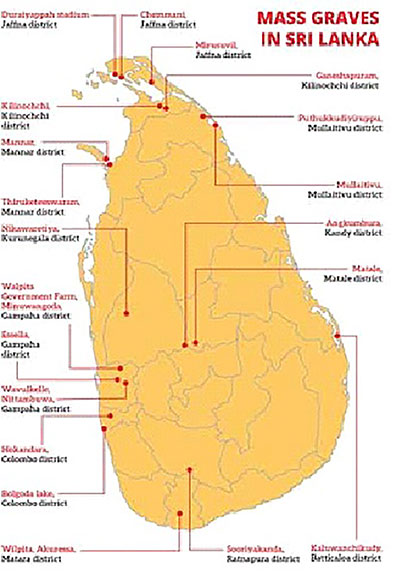 Whatever anyone else might say, the victims of Batalanda and their survivors have vindicated the NPP government’s decision to formally table the Batalanda Commission Report in parliament. As for their continuing expectations, Brito Fernando went on say, “We have some hopes regarding this government, but they should walk the talk.” Mr. Fernando suggested that the government should co-ordinate with the UNHRC’s Sri Lanka Accountability Project that has become a valuable resource for preserving evidence and documentation involving human rights crimes and violations over many decades. In addition, Mr. Fernando pointed out that the grieving families have not been involved in the ongoing excavations of mass graves, and they are anxious to receive the remains of their dear ones after their identity is confirmed through DNA analyses. Nor has there been any sign of legal action being taken against any of the suspects connected to the mass graves.
Whatever anyone else might say, the victims of Batalanda and their survivors have vindicated the NPP government’s decision to formally table the Batalanda Commission Report in parliament. As for their continuing expectations, Brito Fernando went on say, “We have some hopes regarding this government, but they should walk the talk.” Mr. Fernando suggested that the government should co-ordinate with the UNHRC’s Sri Lanka Accountability Project that has become a valuable resource for preserving evidence and documentation involving human rights crimes and violations over many decades. In addition, Mr. Fernando pointed out that the grieving families have not been involved in the ongoing excavations of mass graves, and they are anxious to receive the remains of their dear ones after their identity is confirmed through DNA analyses. Nor has there been any sign of legal action being taken against any of the suspects connected to the mass graves.
The map included here shows twenty identified mass graves spread among six of the country’s nine provinces. There could be more of them. They are a constant reminder of the ravages that the country suffered through over five decades. They are also a permanent source of pain to those whose missing family members became involuntary tenants in one or another mass grave. The families and communities around these mass graves deserve the same opportunity that the impacted families of Batalanda have been given by the current exposure of the Batalanda Commission Report.
The primary purpose of dealing with past atrocities and the mass graves that hold their victims is to give redress to survivors of victims, tend to their long lasting scars and reengage them as free and full members of the community. Excavation and Recovery, DNA Analysis and Community Engagement have become the three pillars of the recuperation process. Sri Lanka is among nearly a hundred countries that are haunted by mass graves. Many of them have far greater numbers of mass graves assembled over even longer periods. Suffering and memories are not quantitative; but unquantifiable and ineluctable emotions. The UN counts three buried victims as a mass grave. Even a single mass grave is one too many.
To do nothing about them is a moral and social copout at every level of society and in the organization of its state. Normalising the presence of mass graves is never an option for those who live around them and have their family members buried in them. Not for them who have built up over centuries, emotional systems of rituals for parting with their beloved ones. And it should not be so for governments that would otherwise go digging anywhere and everywhere in pseudo-archaeological pursuits.
Mass graves are created because of government actions and actions against governments. But governments come and go, and people in governments and political organizations change from time to time. There is a new government in town with a new generation of members in the Sri Lankan parliament, and it is time that this government revisited the country’s past and started providing even some redress to those who have suffered the most. The families of the Batalanda victims have vindicated the NPP government’s action to officially publicise the Batalanda Commission Report. The government must move on in that direction ignoring the carping of critics who selectively remember only the old JVP’s past.
There is more to what the government can do beyond mass graves. The Batalanda Commission Report is one of reportedly 36 such reports and each Commission has provided its fact findings and recommendations. Hardly any of them have been acted upon – not by the governments that appointed them and not by the governments that came after and created their own commissions. The JVP government must seriously consider creating a one last Commission, a Summary Commission, so to speak, to pull together all the findings and recommendations of previous commissions and identify steps and measures that could be integrated into ongoing initiatives and programs of the government.
The cynical alternative is to throw up one’s hands and do nothing, similar to cynically leaving the mass graves alone and doing nothing about them. The more sinister alternative was what Gotabaya Rajapaksa attempted when he appointed a new Commission of Inquiry to “assess the findings and recommendations” of previous commissions. That attempt was roundly condemned as a witch hunt against political opponents set up under the 1978 Commissions of Inquiry Act that was specifically enacted to enable the targeting political opponents under the guise of an inquiry. Repealing that act should be another consideration for the NPP government.
I am just floating the idea of a Summary Commission as a potential framework to bring positive closure to all the war crimes, emblematic crimes and human rights violations that have been plaguing Sri Lanka for the entire first quarter of this century. It is a political idea befitting the promises of a still new government, and one that would also be a positive fit for the government’s much touted Clean Sri Lanka initiative. For sure, it would be moral cleansing along with physical cleansing. A Summary Commission could also provide a productive forum for addressing the pathetic dysfunctions of the whole law and order system. The NPP government inherited a wholly broken down law and order system from its predecessors, but its critics suddenly see a national security crisis and it is all this government’s fault.
More substantively, a Summary Commission could tap into the resources of the UNHRC in collegial and collaborative ways without the hectoring and adversarial baggage of the past. These must be trying times for the UNHRC, as indeed for all UN agencies, given the full flight of Trumpism in America and its global spill over. Sri Lanka is one of a handful of countries where UNHRC professionals might find some headway for their mission. And the NPP government could be a far more reliable partner than any of its predecessors.
by Rajan Philips
-
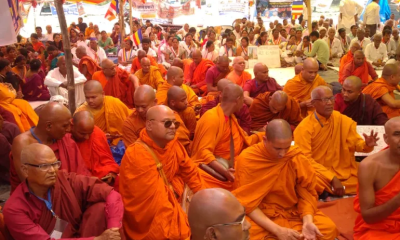
 Foreign News7 days ago
Foreign News7 days agoBuddhism’s holiest site erupts in protests over Hindu ‘control’ of shrine
-
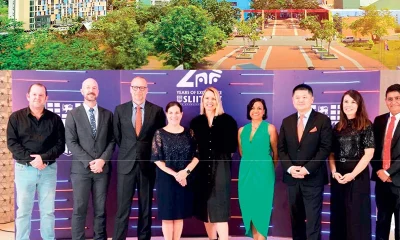
 Features5 days ago
Features5 days agoCelebrating 25 Years of Excellence: The Silver Jubilee of SLIIT – PART I
-
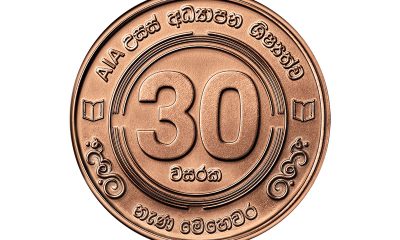
 Business3 days ago
Business3 days agoAIA Higher Education Scholarships Programme celebrating 30-year journey
-

 Business5 days ago
Business5 days agoCEB calls for proposals to develop two 50MW wind farm facilities in Mullikulam
-
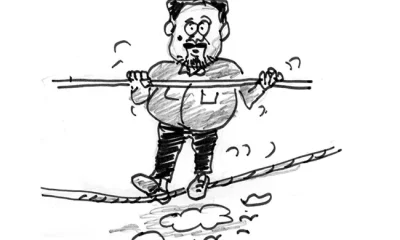
 Features5 days ago
Features5 days agoNotes from AKD’s Textbook
-
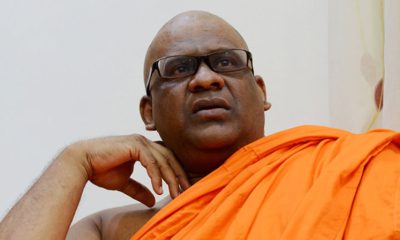
 News2 days ago
News2 days agoGnanasara Thera urged to reveal masterminds behind Easter Sunday terror attacks
-
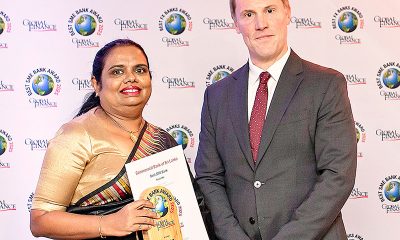
 News1 day ago
News1 day agoComBank crowned Global Finance Best SME Bank in Sri Lanka for 3rd successive year
-

 Features6 days ago
Features6 days agoNick Carter …‘Who I Am’ too strenuous?











